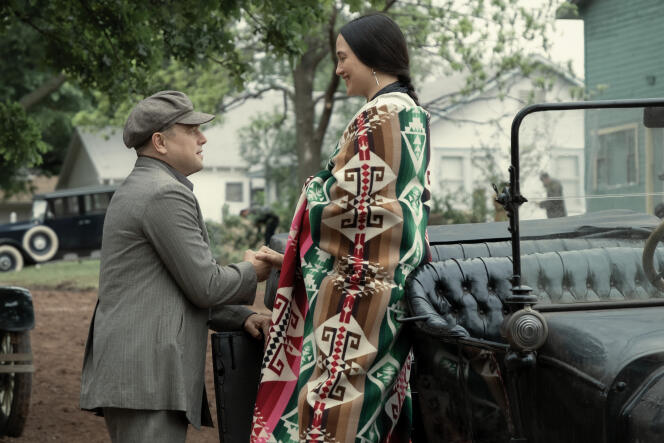THE “WORLD’S” OPINION – NOT TO BE MISSED
After the frustrating episode of Irishman (2019) confined to Netflix, we are delighted that the latest work by Martin Scorsese, 80 years old, financed by Apple, is finding its way to theaters. The remarkable Killers of the Flower Moonits 27e feature film in sixty years of career, presented out of competition at the Cannes Film Festival, takes on its full dimension as a territorial fresco, but under a secret side, a dark story of pernicious invasion and evil contamination, drawing up American history one of the most frightening paintings.
The film draws on the historical vein of Scorsesian work (The Time of Innocence, Aviator, Silence), parenthesis opposed to his punk outpourings (The wolf of Wall Street, At an open grave) and its usual formal expenditure. In fact, this adaptation of an investigation by journalist David Grann (The American NoteGlobe, 2018) is more classic in style, in the noble sense of the term, sure of its strengths and which is not without an edifying aim.
It is about bringing to light a massacre buried by history, committed at discretion: that of the Osage Native American tribe by white despoilers, during the 1920s. At the end of the 19th centurye century, as fake reconstructed newsreels remind us at the beginning of the film, oil deposits were discovered in Osage territory, in their natural reserve in Oklahoma, the exploitation of which made the nation of the day on the next day, the “richest social group in the world by pipe head”.
The industrial development of the region immediately attracted a host of opportunists of all stripes, including businessmen who were good in all respects, outraged by these Indians whose opulence would be an affront to the natural order and who came to reassign these flows of wealth to more respectable pockets. Understand: theirs, those of white people. Little by little, violent deaths accumulated on the Osage side, in such proportions that they ended up justifying the intervention of a federal police during a training period, under the leadership of John Edgar Hoover.
Capture of legacies
The story opens in the aftermath of the First World War, when Ernest Burkhart (Leonardo DiCaprio), an idle veteran, arrives by train at Gray Horse, one of the boomtowns pushed into the oil plains, to join his uncle. William Hale (Robert De Niro), prominent local rancher. Under the cover of philanthropy, the patriarch nicknamed “King”, self-proclaimed protector of the Native Americans, secretly orchestrates a sordid capture of inheritance by marrying his sons and nephews to Osage young ladies, who are then slowly eliminated.
You have 57.74% of this article left to read. The rest is reserved for subscribers.
